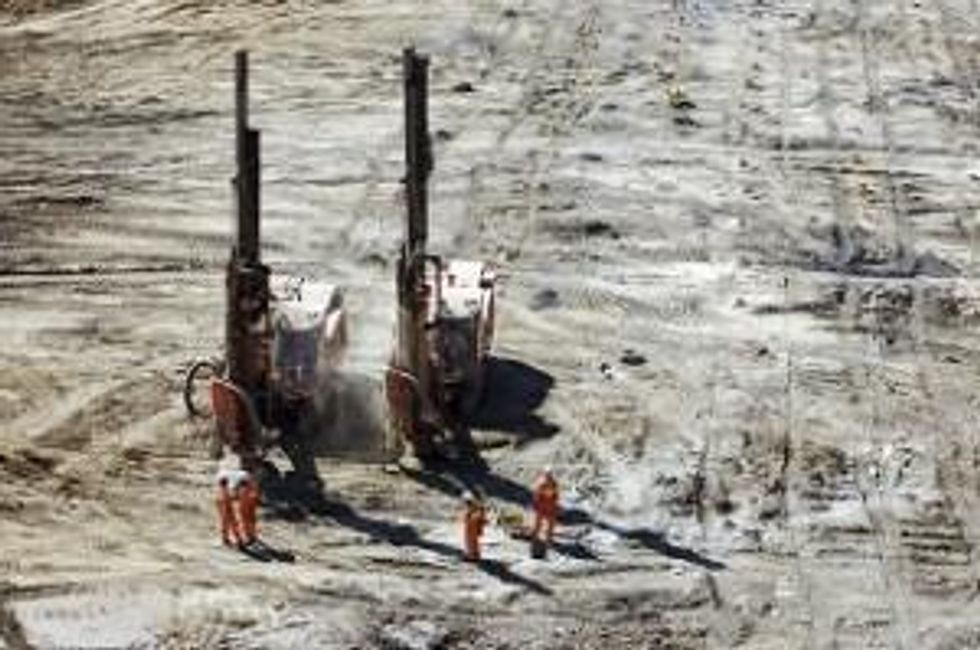Global X has launched an ETF for junior miners that includes 96 stocks in different sectors and locations.
“The junior mining space is a very attractive space at current valuations,” Global X CEO Bruno del Ama told Resource Investing News in an interview, noting that the ETF’s diversification makes it an attractive investment vehicle compared to investing in single stocks. “Our view is that miners are a better way to invest in the commodity market generally.”
Ama said the ETF is a global fund, with the majority of companies coming from outside the United States and Canada. The top five constituents of the ETF are Coeur d’Alene Mines (NYSE:CDE,TSX:CDM) (2.58 percent) in the silver space, AuRico Gold (NYSE:AUQ,TSX:AUQ) (2.57 percent), Alumina (NYSE:AWC) (2.29 percent) in the aluminum space, China Molybdenum (HKEX:3993) (2.23 percent) and Alacer Gold (TSX:ASR) (2.18 percent).
“It provides diversification across resources by including companies involved in the production of coal, copper, gold, iron, nickel, silver, titanium and other materials,” he said. “The largest company has less than a 3 percent weighting. Companies are generally weighted in the 0.5 percent to 3 percent range. When you go from the senior producer to the junior miner that combines mines in production with exploration and development, those are clearly more risky plays.”
Global X has more than $1 billion in assets under management. Ama, who has more than 14 years of experience in asset management, said nearly half the company’s assets are in the mining space.
Ama said the ETF was “just seeded with a couple of million dollars with the initial investing in the NYSE. This is a big asset class, and we think it is an asset class that is very attractive. From our perspective this is the right time to get into this asset class given valuations. Over the next couple of years we expect to get a pretty sizeable amount of assets into the fund.”
The 96 stocks were selected by looking at the global junior space. The ETF “essentially takes all of the investable companies, with a minimum market capitalization of 300 million and good liquidity, with no restrictions with regard to geography or metals, whether is it coal, copper, tin, tungsten,” Ama said. “If you look at the full range of junior miners with 300 million to 2 billion in market cap, we end up with about 100 companies. It really takes the full spectrum into the ETF.”
Ama said there is no other ETF product on the market like Global X’s junior ETF. “There are general mining funds and a fund that focuses on one particular commodity, gold in the junior space, and it has raised over $2 billion in assets,” he said. “But there is nothing that focuses on a broad spectrum of junior mining companies.”
Even though mining shares, especially those of juniors, remain risky, Ama said he would argue that a balanced portfolio needs a “meaningful allocation” to commodities.
“The way we look at the investment universe is to build well-diversified portfolios … Our base allocation is 10 percent on average to commodities,” he said, adding that one option is to invest in juniors.
Juniors “are a levered play on the price of commodities,” he said. “When commodities go up, miners go up faster, when they go down, the miners go down faster. We are seeing a disconnect right now. We see value in miners versus the value of the physical commodities.”
He added, “we like the juniors because they have been decimated a lot more than senior miners. Typically juniors have some production assets that give them cash flows and they use that money to explore. In the current environment, we believe junior miners are the most attractively priced segment in the mining sector.”
Securities Disclosure: I, Karan Kumar, hold no direct investment interest in any company mentioned in this article.
